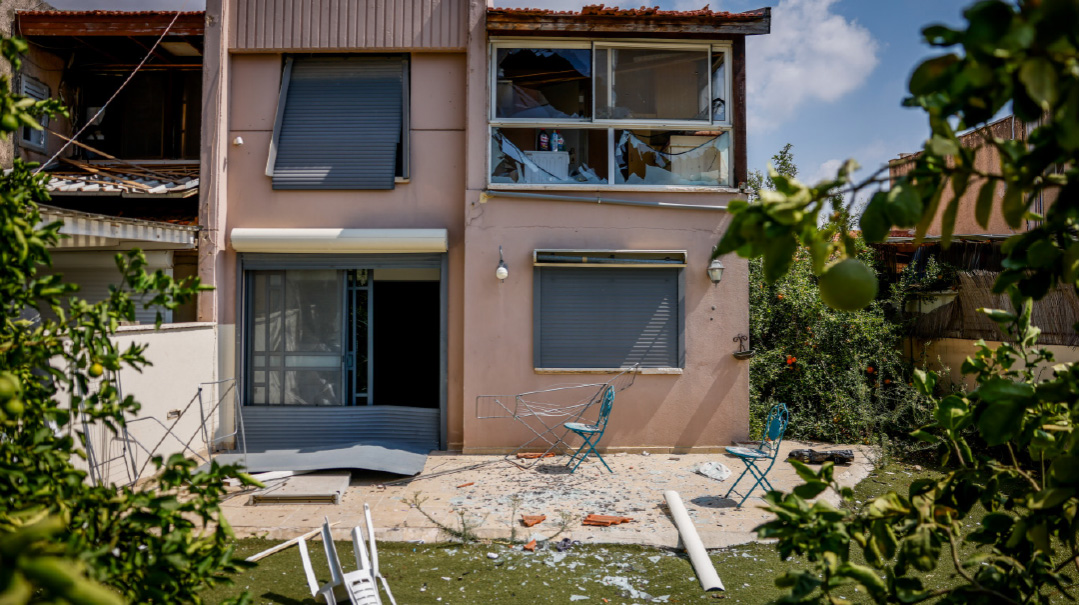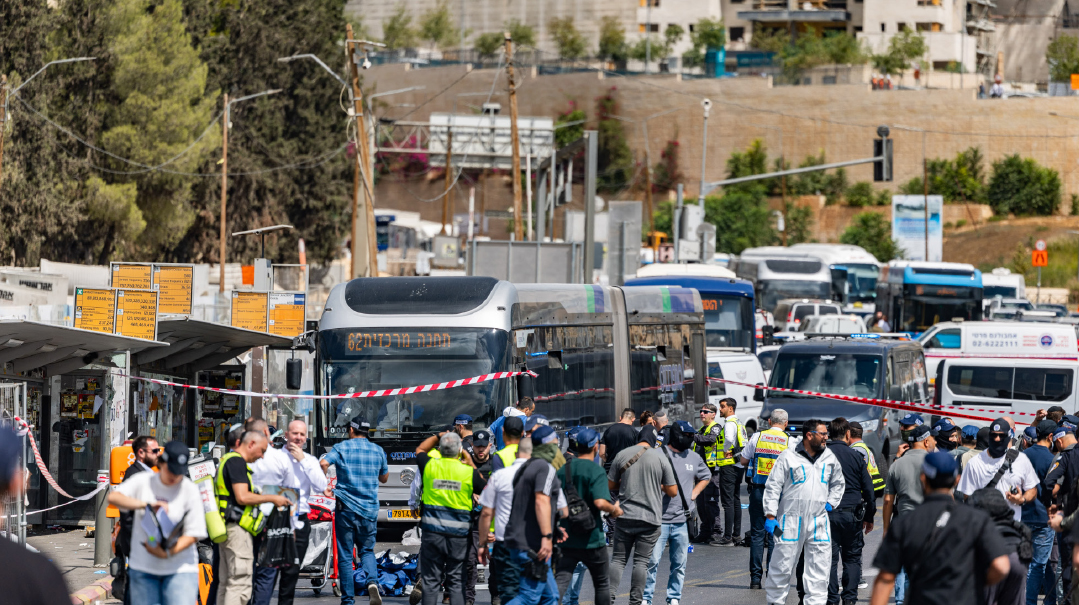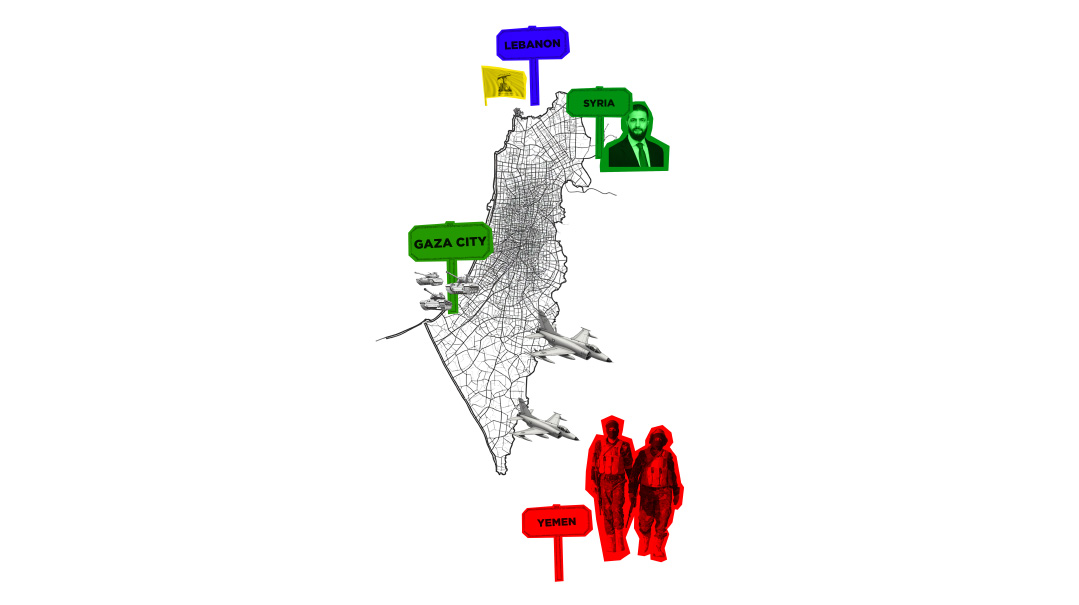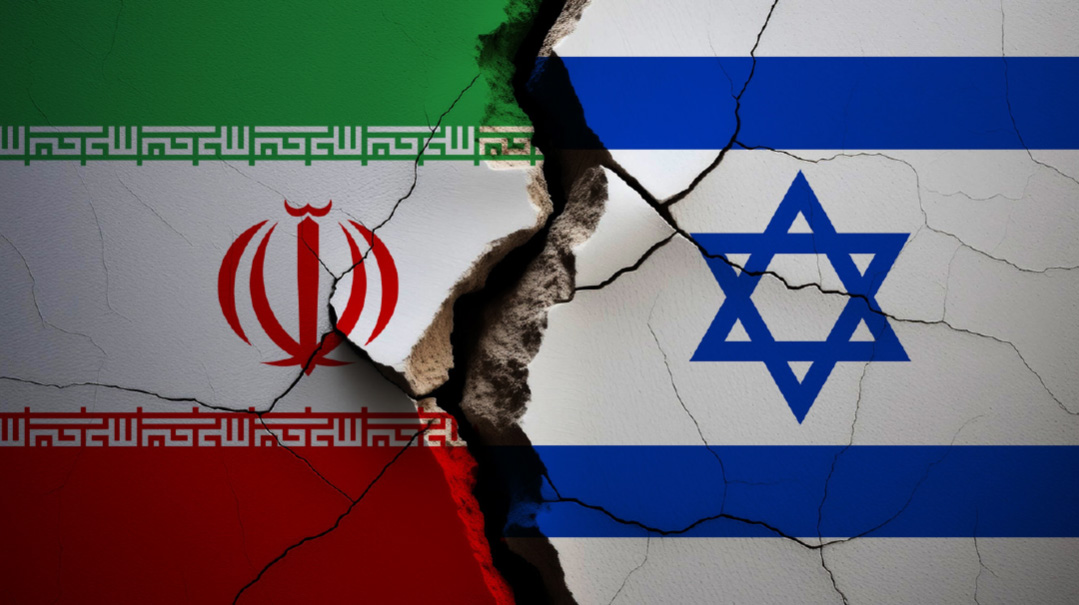Landing the First Punch
| August 27, 2024Was Hezbollah really caught off-guard? For residents of the North, the answer doesn’t really matter

Photo: Flash90
A
fter Israel’s momentous preemptive strike on Hezbollah rocket and drone emplacements in Lebanon early on Sunday, the terror group signaled that it was satisfied with the 300 or so rockets it managed to fire off, and that it would make no further moves for now. That, in turn, satisfied the IDF and its American overseers that no escalation is forthcoming — but Israel’s tens of thousands of evacuees from northern towns and cities are still left hanging.
The 4:30 a.m. H-Hour for Sunday’s preemptive attack was set just hours before it began. But the operation had been planned weeks in advance and approved three days earlier.
In recent weeks, Israel increasingly recognized that Hezbollah wanted a symbolic “victory picture” to avenge last month’s assassination of Fuad Shukr, the organization’s chief of staff, and wouldn’t settle for an ordinary response. Meticulously collected intelligence, some shared with Israel by the Americans, indicated intentions of a pinpoint yet powerful strike.
The United States has repeatedly made clear to Prime Minister Binyamin Netanyahu, Defense Minister Yoav Gallant, and Chief of Staff Herzi Halevi that it opposes a preemptive Israeli strike and won’t back Israel if such an attack draws Hezbollah into all-out war. But at the same time, per a senior political official, the Americans also feared that a successful Hezbollah attack could force Israel’s hand, leading to a regional escalation.
That’s why the US fully backed Israel’s preemptive attack Sunday morning. While it didn’t directly participate, the US shared intelligence with the Israelis that helped with the strike’s precise planning and timing.
Heavy Hail
Last weekend, Israel recognized that Hezbollah’s retaliation would occur within days, with early indications pointing to the 40th day since Shukr’s assassination on July 30. By Friday, needed reservists were mobilized and targets were updated at a dizzying pace. On Motzaei Shabbos, IDF spokesperson Brig. Gen. Daniel Hagari released a rare statement warning of a “significant week” ahead. It was around the same time that intel revealed Hezbollah’s H-Hour for the retaliatory strike: 5 a.m. on Sunday morning, day 26 since Shukr’s assassination.
According to a New York Times report, Israel had received indications that Hezbollah intended to strike Military Intelligence and Unit 8200 facilities in the Glilot military base in Tel Aviv, in addition to launching thousands of rockets at communities along the border and the Western Galilee. Among other things, the IDF identified the movement of missiles and launching systems.
The Israeli preemptive strike was scheduled for 4:30 a.m., about half an hour before Hezbollah’s attack. The Americans, who had been in on the planning from the earliest stages, made clear that Israel had their full support, but demanded that the attack be limited to preventative objectives. Chairman of the Joint Chiefs of Staff General Charles Q. Brown arrived in Israel on Shabbos to make sure that US interests were upheld and to report directly to President Biden, who was monitoring the situation closely throughout the operation.
At 4:25, more than 100 fighter planes and attack drones armed with hundreds of barad kaved (“heavy hail”) bombs took off, attacking 270 targets at 04:30 almost simultaneously for about 20 minutes. Among the targets were launching pads loaded with thousands of short-range rockets aimed at communities along the border line and the Western Galilee and even Akko further south, as well arms storage and drone launching sites.
At 4:35, IDF spokesperson Daniel Hagari issued a special statement explaining that the IDF was attacking to eliminate threats in Lebanon. Forty minutes later, Ben-Gurion Airport was closed for departures. Only an hour after the preemptive attack began, Hezbollah began firing hundreds of rockets and drones at Israel, with sirens sounding in Akko, the Meron area, Katzrin, Maalot-Tarshiha, Tzfas, Kiryat Shmona, and Shlomi. Most of the rockets were intercepted, while some landed in open areas, causing small fires, and some hit homes directly, causing significant damage. UAVs launched toward central Israel — reportedly headed for the Glilot base — were shot down. Not a single rocket or drone reached Gush Dan.
During the offensive, the Iron Dome system intercepted a drone off the coast of Akko. An initial IDF investigation indicates that a Dvorah-class navy ship was either hit directly by the intercepting rocket in a rare malfunction, or by shrapnel from the interception, resulting in three soldiers being wounded. Two were in light to moderate condition, while a third, Petty Officer First Class David Moshe Ben Shitrit, was critically wounded and later died of his wounds.
Over the course of the day, the IDF attacked in southern Lebanon several more times, but that was more or less it. Hezbollah would claim — both in official statements and in a Nasrallah speech Sunday evening — that its meager rocket attack achieved its objectives, including the baseless claim that it hit the Glilot base.
Already a War
Israel believes that the heavy American presence in the region helped Hezbollah make do with its questionable achievements rather than plunge the region into all-out war. Not yet, anyway. Was Hezbollah really caught wrongfooted by the attack, or is just trying to lull Israel into unpreparedness? For residents of the north, the answer doesn’t really matter.
For more than ten months, northern communities have suffered continuous rocket fire. There was no preemptive strike to return the tens of thousands of evacuees to their homes; and no one took out the missile launchers that claimed the lives of 20 soldiers and 23 civilians, including adults, women, and small children, and wounded more than 180 civilians and soldiers.
At the start, Hezbollah was warned that it would come to miss the Second Lebanon War if it entered the war, as if the northern front isn’t already a war. Then the Shiite group was warned not to cross the border; when it was crossed, they were warned not to cross the “red line”; and when that was crossed too, they were admonished not to expand their range of targets — and that has now also happened.
The United States and Israel hope to use the latest exchange of fire as the starting point for a political settlement to restore quiet to the north. But Israelis post October 7 no longer buy “a settlement to restore quiet.”
There are close to 100,000 evacuees, thousands of “voluntarily” displaced persons, hundreds of thousands of civilians for whom sirens have become daily routine for the past 11 months, and thousands of devastated business owners who don’t believe in an “arrangement.” Everyone fears that anything short of neutralizing Hezbollah’s capabilities and throwing it beyond the Litani River while purifying southern Lebanon of all its tunnels, underground bunker complexes, weapons caches, and rocket launchers will bring about October 7 on steroids — if not today, then in six months or a year. Hezbollah isn’t going anywhere, and has already shown who’s dictating the tone and pace of events in the current campaign.
Meanwhile, senior IDF officials I spoke to in recent days are skeptical about the odds of a political settlement. As one of them told me, “I don’t engage with the question of whether an arrangement will be effective or not, because I don’t believe there’s a realistic chance of it even being drafted, much less signed. There’s no wording that both sides could agree to.”
The IDF will remain on heightened alert in the immediate future, with future strikes of a similar nature still on the table. Northern residents, meanwhile, are demanding the same rule for Glilot and Kiryat Shmona.
(Originally featured in Mishpacha, Issue 1026)
Oops! We could not locate your form.







